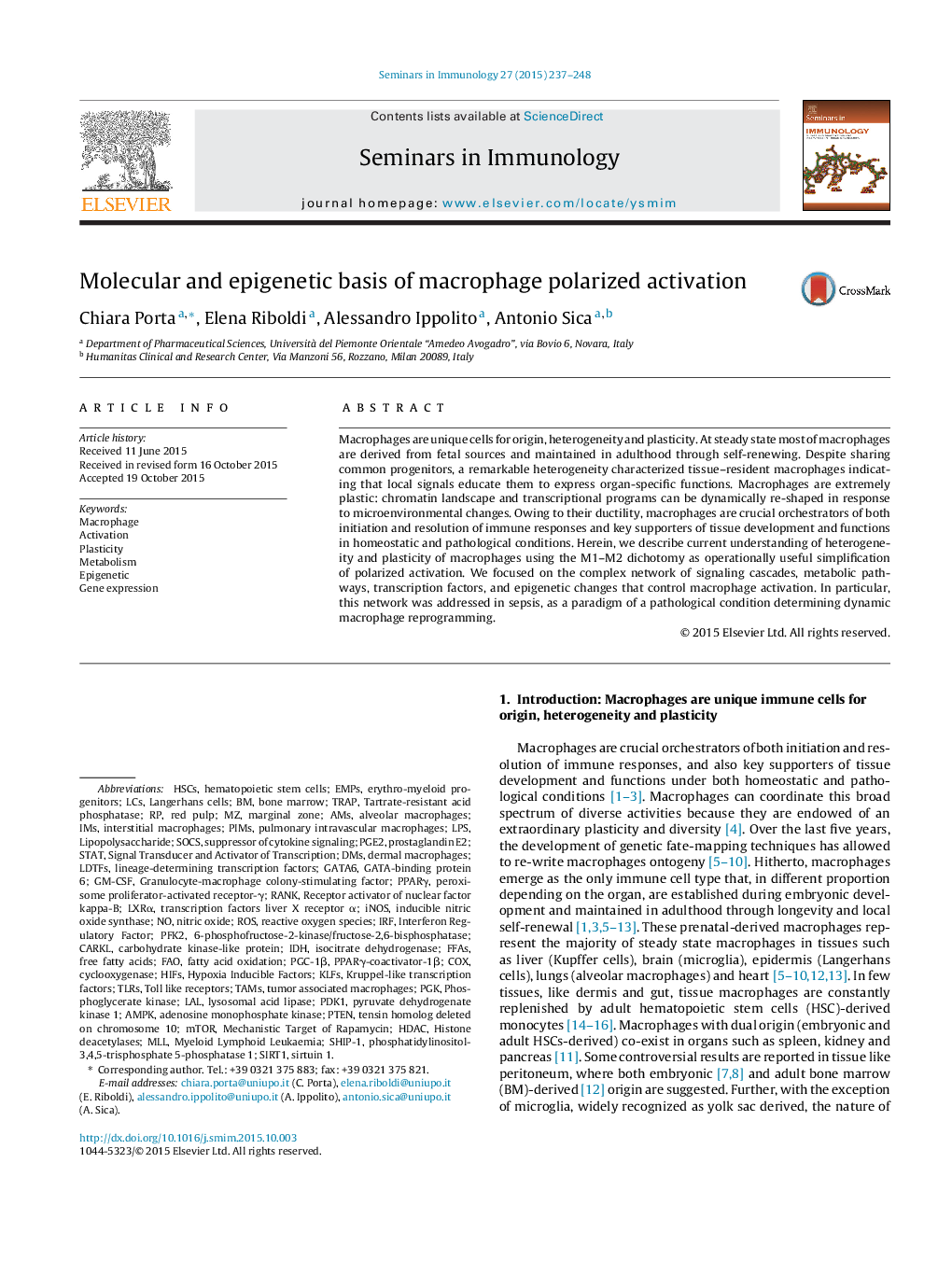| کد مقاله | کد نشریه | سال انتشار | مقاله انگلیسی | نسخه تمام متن |
|---|---|---|---|---|
| 3391304 | 1221027 | 2015 | 12 صفحه PDF | دانلود رایگان |
• Macrophages are unique cells for origin, heterogeneity and plasticity.
• Local signals educate macrophages to express organ-specific functions.
• A remarkable transcriptional and epigenetic plasticity characterized macrophages.
• Macrophage activation is continuously reshaped by external cues and metabolic changes.
Macrophages are unique cells for origin, heterogeneity and plasticity. At steady state most of macrophages are derived from fetal sources and maintained in adulthood through self-renewing. Despite sharing common progenitors, a remarkable heterogeneity characterized tissue–resident macrophages indicating that local signals educate them to express organ-specific functions. Macrophages are extremely plastic: chromatin landscape and transcriptional programs can be dynamically re-shaped in response to microenvironmental changes. Owing to their ductility, macrophages are crucial orchestrators of both initiation and resolution of immune responses and key supporters of tissue development and functions in homeostatic and pathological conditions. Herein, we describe current understanding of heterogeneity and plasticity of macrophages using the M1–M2 dichotomy as operationally useful simplification of polarized activation. We focused on the complex network of signaling cascades, metabolic pathways, transcription factors, and epigenetic changes that control macrophage activation. In particular, this network was addressed in sepsis, as a paradigm of a pathological condition determining dynamic macrophage reprogramming.
Figure optionsDownload as PowerPoint slide
Journal: Seminars in Immunology - Volume 27, Issue 4, August 2015, Pages 237–248
